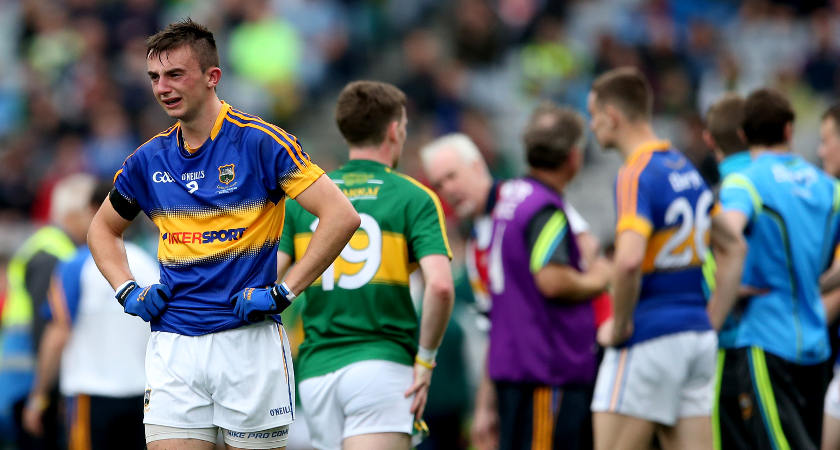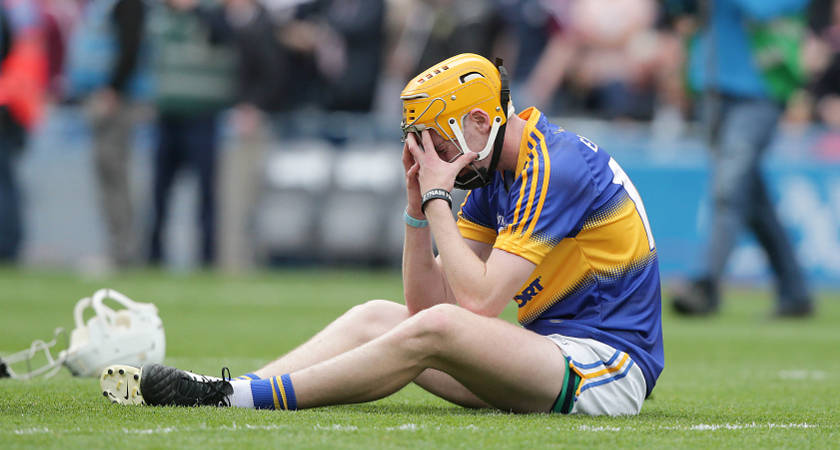WHEN former Tipperary and Munster physiotherapist John Casey spoke last week about player burnout, his comments were more hard-hitting than anything previously expressed on this topic.
In Casey’s opinion, many young GAA players are being “institutionalised”, not realising what they have sacrificed for their sport until it is too late.
“Some of the guys that have been through the process end up quite embittered after what they gave up for it,” said Casey. “While it was glorious at the time, the long term repercussions are life-lasting. I think the sacrifices being asked of players without fully explaining to them the consequences are huge. It’s not until you come out of it that you realise what you’re missing.”
The process is becoming longer because young players are being asked to give more than ever. At the Cork County Convention before Christmas, the County Board’s coaching officer Kevin O’Donovan said that some young players are at breaking point with the playing burden they routinely face.
“We must make sacrifices to get a better product, for want of a better term, at the end,” said O’Donovan. “At 17, 18 they’re roasted from all sides. There will have to be leadership given to stop these guys burning out and being finished at 20.”
In Cork, the strain on some good young players, particularly dual players, has always been exacerbated by the structures, especially those playing with divisional teams. At one stage of the 2011 season, Aidan Walsh played with 19 different teams.
Walsh was a unique example as a dual player but most talented young players now are faced with increasing demands. They are also more at risk because of their developing physiological, psychological and physical skeletal maturity and the difficulty in recognising early symptoms of overuse injury.
When Paraic Duffy released his discussion paper in November on ‘Player Overtraining and Burnout, and the GAA Fixtures Calendar’, two of his main proposals were the replacement of inter-county minor by an U-17 championship, and the discontinuation of the U-21 football inter-county championship.
 Tipp Minor Tommy Nolan dejected [Picture: Inpho]
Tipp Minor Tommy Nolan dejected [Picture: Inpho]Duffy’s recommendations make sense to a point but there would still be too much of a gap between U17 and senior. Not having an U-21 championship is always likely to create a massive vacuum and widen the gap between making that step-up to senior level. It would also leave too many players without the sustenance of playing games.
The main problem with the current U21 football championship is its timing, because the spring calendar is packed to capacity. So what can be done?
Dropping the minor grade to U-17 is a positive step because fewer players would be sitting their Leaving Certificate that year. Since an U-19 competition would still affect Leaving Cert students, replacing the U-21 with an U-20 competition would take more underage players out of the senior grade.
The GAA could also look at something former Cork and Limerick hurling manager Donal O’Grady suggested as far back as September 2007; that if an U-21 has already played senior championship, he is ineligible to play U-21 again.
That would have a greater impact on the weaker counties with smaller playing numbers but it would still be a far better alternative than scrapping the U-21 football championship altogether. Duffy is still keen to initiate huge change because the only real legacy of the 2007 Task Force on Burnout report was that Freshers couldn’t play in the Sigerson and Fitzgibbon Cup competitions.
A motion was passed at last year’s GAA Congress, recommended by the rules advisory and minor review committee, to change the minimum age grades at U21 and adult level in club and county, which came into effect on January 1st. Only over 18s are permitted to line out at adult inter-county level; for clubs a player must be over 17 to play adult.
The rule precludes talented hurlers like Waterford’s Billy Nolan, who played U-21 championship last year when he was U-17, from lining out with the county U-21s this season.
Already, a number of board officials have questioned the rule’s repercussions, especially the impact on rural clubs. Yet the demands on young players are becoming greater, especially the elite, and the player will keep trying to serve as many masters as he can as long as those masters are there.
Much of this debate still hinges on how much overall competition structures will actually change. In the meantime, managers and coaches have got to try and adapt and change to form a new culture, where a player-centred approach should govern everything a coach or manager does.
 A dejected Cian Darcy, Tipperary minor
A dejected Cian Darcy, Tipperary minorThe best managers have long understood as much; that player welfare is always paramount; that there is no fun for players when they’re continually being flogged; that fun has to be an essential part of the process. If it isn’t, why will players bother?
Coaches and managers have to educate themselves more now so that they become more player-centred. They have also got to be more open-minded, and more understanding of the player, in order to see the bigger picture.
Many coaches and managers don’t tolerate requests or grant leeway. They interpret a player asking for time off to study, attend a family event, or just recuperate, as a weakness that will ultimately bring the whole show down.
It is a balance. Of course managers don’t want to be fooled or codded but that bullish attitude often breeds resentment and increases the physical and mental burden on young players. Players can also help themselves more. Some are afraid to ask for time off for fear of losing their place. Yet research shows that players who are most assertive and independent-thinking play longer.
That is the culture that needs to be created; a culture of better player welfare that always puts the bigger picture ahead of any short term goals.

